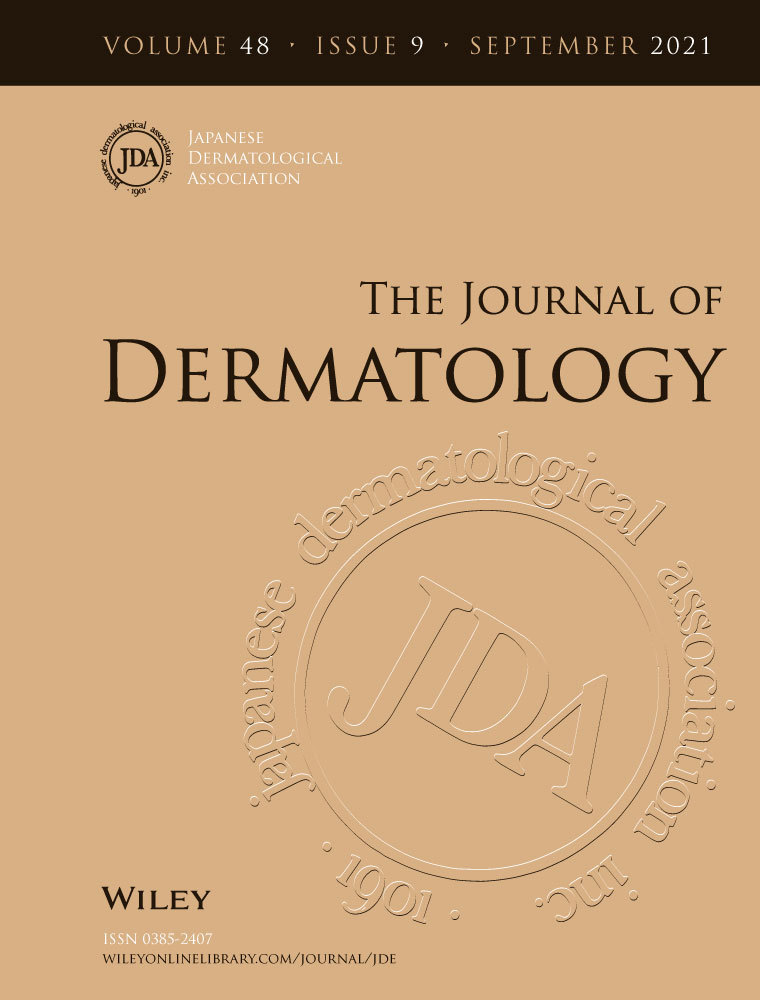Increased prevalence of doxycycline low-susceptible Cutibacterium acnes isolated from acne patients in Japan caused by antimicrobial use and diversification of tetracycline resistance factors
Funding information
This work was supported by the Matching Fund Subsidy for the Private Schools of Japan.
Abstract
The prevalence of antimicrobial-resistant Cutibacterium acnes is an important concern for the antimicrobial treatment of acne vulgaris. We hypothesized that antimicrobial treatment regimens for acne vulgaris would change following the revisions in the Japanese acne treatment guidelines, which added a statement regarding appropriate antimicrobial usage. Here, we studied the changes in antimicrobial use and antimicrobial-resistant C. acnes isolated from acne patients. A total of 127 C. acnes isolates collected from 212 patients with acne between 2013 and 2018 were used. Roxithromycin and clindamycin resistance rates were approximately 50% and 40%, respectively. In contrast, the prevalence of low doxycycline-susceptible strains (minimum inhibitory concentration [MIC] ≥8 μg/mL) in 2018 (17.4%) was 5.6-fold higher than that in 2013 (3.1%). Although the number of patients with severe and moderate acne did not change, the number of patients with a history of oral tetracycline use increased. The incidence of low doxycycline-susceptible strains was high in patients with a history of oral tetracycline use. The prevalence of strains with a 16S rRNA mutation, which confers reduced susceptibility to tetracyclines, increased by 8.6-fold (12.1%) from 2016 to 2018 in comparison with the previously revised guidelines (1.4%). Furthermore, the prevalence of low susceptibility strains with two resistance factors, 16S rRNA mutation and ribosomal S10 protein substitution, also increased. Approximately 10% of strains had the exogenous resistance gene, tet(W) (2013 to 2015, 10.1%; 2016 to 2018, 8.6%), and these strains showed different susceptibility to doxycycline dependent on the expression of tet(W) (MIC range 0.5–8 μg/mL). Our data show that the antimicrobial resistance pattern in C. acnes changes according to the trend of antimicrobial usage for acne treatment. Therefore, we should pay heed to the rapid dissemination of tetracycline resistance in C. acnes owing to acquisition of 16S rRNA mutation and tet(W).
CONFLICT OF INTEREST
None declared.




